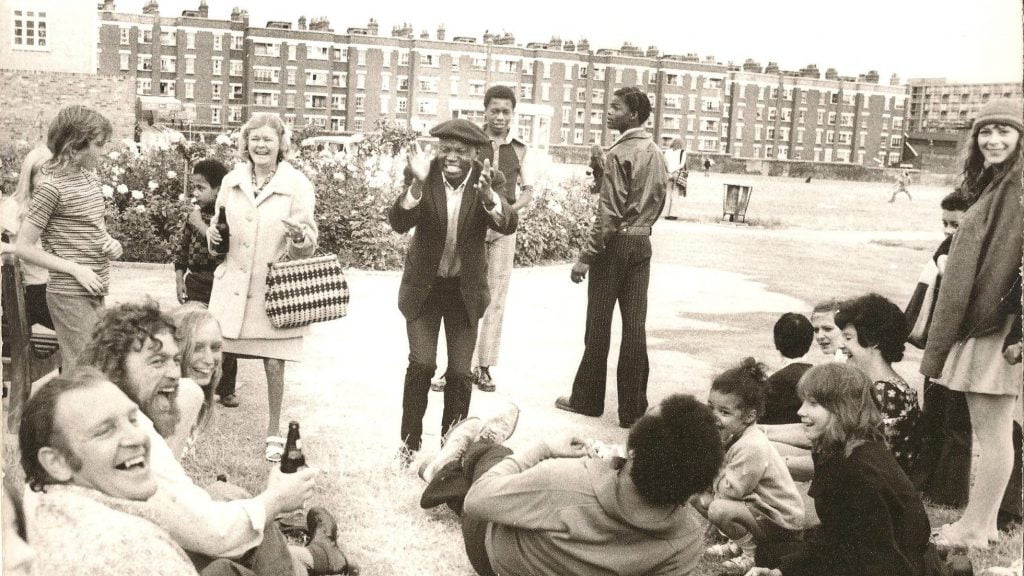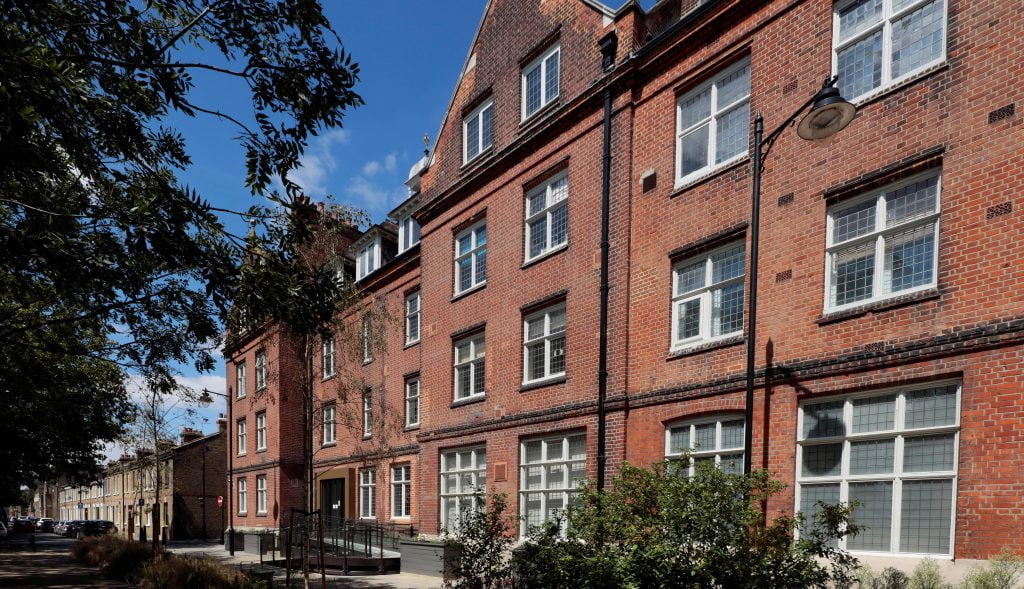
Our History
Oxford House has been based in Bethnal Green since 1884, offering local people the chance to create, learn and volunteer. Learn more about our history below.
Past & Present
Oxford House was established in 1884 as the first “settlement house” where students and graduates from Keble College, Oxford undertook residential volunteering to tackle the challenges of urban poverty first-hand. These volunteers worked locally and lived upstairs in Oxford House which was like a mini Oxford college in the heart of Bethnal Green.
Volunteers provided practical support to alleviate the impact of poverty to the local community by creating projects such as youth clubs, poor man’s lawyer, labour exchanges, and adult education classes.
Today, Oxford House is still a vital community hub based in our beautiful, refurbished Grade II listed building on Derbyshire Street.
In 2019 we underwent a major refurbishment and are now home to a 120-seat theatre, gallery, dance studio, Victorian chapel, cafe and rooftop terrace with spectacular views across East London. Read more about our history below:
Oxford House Timeline: 1884 - 1945

Oxford House was originally opened in a former school building in 1884. In 1891 work began on a purpose-built building, designed by Sir Arthur Blomfield. This building had a library, dining hall and beautiful chapel. We have been based in this building ever since.

The Revd. Arthur Winnington Ingram became Head of Oxford House in 1889. He was described as an ‘energetic and athletic man with a simple faith and deep pastoral concern’. He eventually became Bishop of London.

Oxford House ran several clubs for local boys and men. The boys' clubs thrived and were very popular with local people. Each year clubs would go on camps and trips outside of London. However, reports show that it was more challenging to retain membership among older men because ‘music halls, cinemas and the wireless’ were ‘very potent-counter-attractions at the time’.

Since the 1800s Oxford House has produced an annual report which looks back on the year’s work and achievements. This annual review is from 1943, during the World War II. Oxford House was fortunate to avoid damage during the war which devastated the East End and during the 1940’s Blitz over 400 local people spent their nights in our basement.

Sally Clutton- Brock (centre) was the first child to live at Oxford House. This photograph shows her playing on the roof with other local children. Oxford House managed to stay open during the war and several clubs and community projects thrived during this period. With so many men away during the war, Oxford House focused many of its activities towards women and girls.
Oxford House Timeline: 1945 - Present

Oxford House began to develop clubs for women and girls from the 1940s onwards. Often these groups would take day trips together and visit different places in the UK.

We have always held festivals at Oxford House. This photo is from the E2 Festival in 1973, which was held in Weavers Fields, the large park opposite our building.

For over 120 years we have run clubs and societies for young people.

East London's Somali community has played an important role in our history at Oxford House. Since the late 1980s there have been Somali clubs and cultural events at Oxford House. Somali Week is annual cultural festival, which began at Oxford House and continues to this day, coinciding with Black History Month.

Oxford House recently underwent a major two year refurbishment, reopening in 2019.. This work has saved our building for the next generation, restored our chapel and improved access at Oxford House.

Exterior of Oxford House,1891
Oxford House was originally opened in a former school building in 1884. In 1891 work began on a purpose-built building, designed by Sir Arthur Blomfield. This building had a library, dining hall and beautiful chapel. We have been based in this building ever since.

Reverend Arthur Winnington Ingram, 1902. (copyright V&A London)
The Revd. Arthur Winnington Ingram became Head of Oxford House in 1889. He was described as an ‘energetic and athletic man with a simple faith and deep pastoral concern’. He eventually became Bishop of London.

Boys Club, 1937
Oxford House ran several clubs for local boys and men. The boys' clubs thrived and were very popular with local people. Each year clubs would go on camps and trips outside of London. However, reports show that it was more challenging to retain membership among older men because ‘music halls, cinemas and the wireless’ were ‘very potent-counter-attractions at the time’.

Oxford House Annual Report, 1943
Since the 1800s Oxford House has produced an annual report which looks back on the year’s work and achievements. This annual review is from 1943, during the World War II. Oxford House was fortunate to avoid damage during the war which devastated the East End and during the 1940’s Blitz over 400 local people spent their nights in our basement.

Rooftop during WW2
Sally Clutton- Brock (centre) was the first child to live at Oxford House. This photograph shows her playing on the roof with other local children. Oxford House managed to stay open during the war and several clubs and community projects thrived during this period. With so many men away during the war, Oxford House focused many of its activities towards women and girls.






Oxford House Outing, 1962
Oxford House began to develop clubs for women and girls from the 1940s onwards. Often these groups would take day trips together and visit different places in the UK.

E2 Festival, 1973
We have always held festivals at Oxford House. This photo is from the E2 Festival in 1973, which was held in Weavers Fields, the large park opposite our building.

Youth Club Music Session, 1986
For over 120 years we have run clubs and societies for young people.

Somali Café at Oxford House Café, 1986
East London's Somali community has played an important role in our history at Oxford House. Since the late 1980s there have been Somali clubs and cultural events at Oxford House. Somali Week is annual cultural festival, which began at Oxford House and continues to this day, coinciding with Black History Month.

Oxford House, 2020
Oxford House recently underwent a major two year refurbishment, reopening in 2019.. This work has saved our building for the next generation, restored our chapel and improved access at Oxford House.





